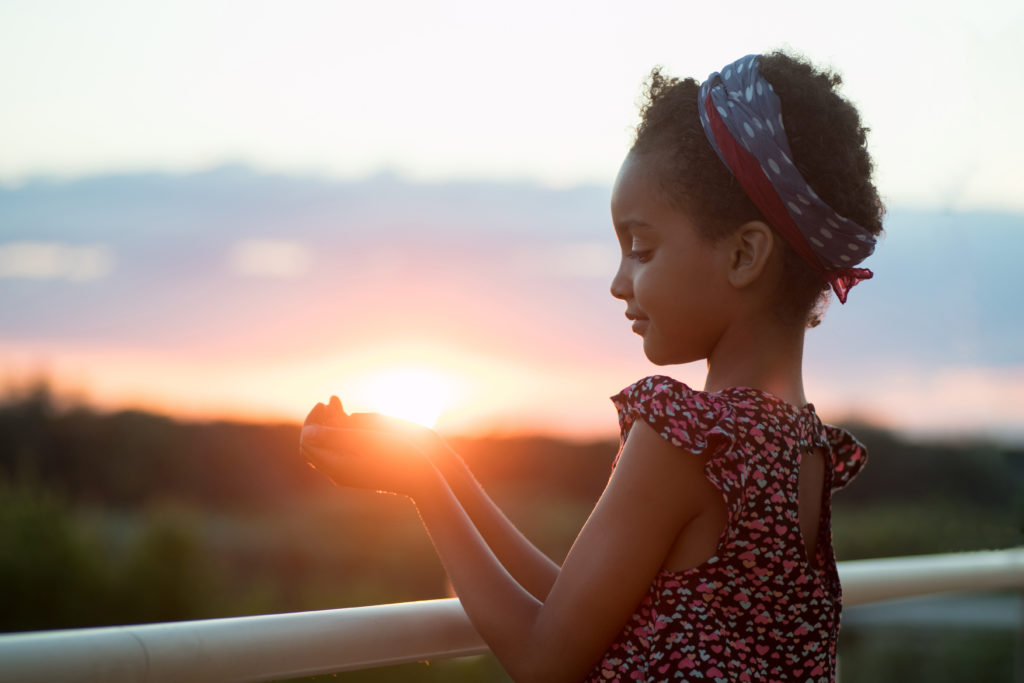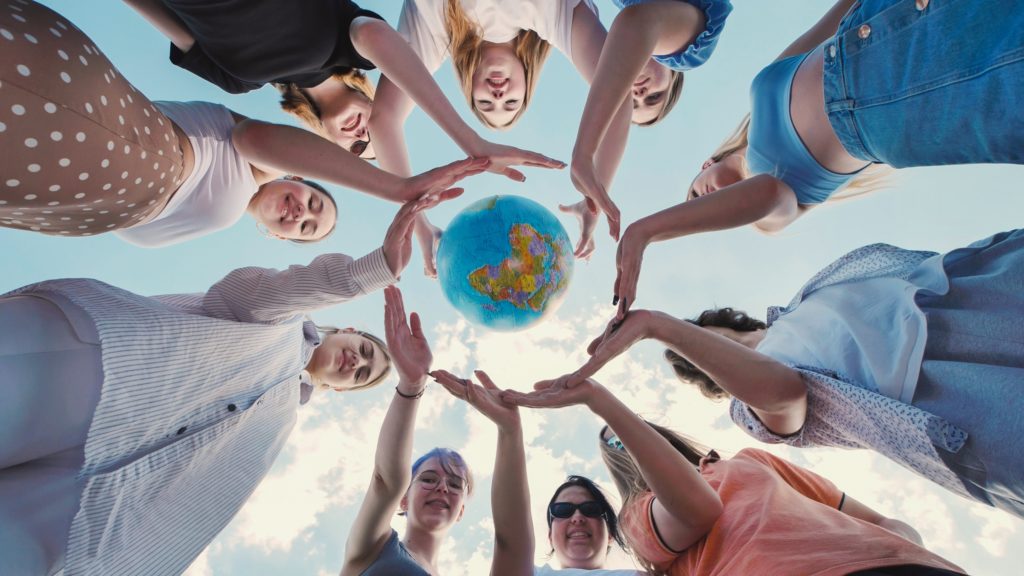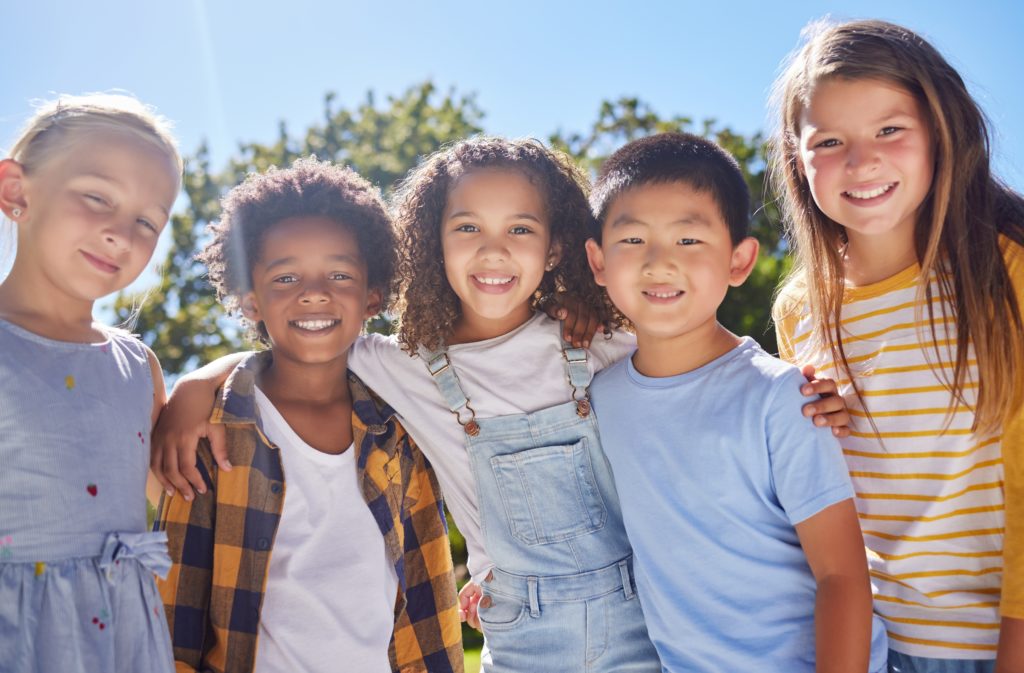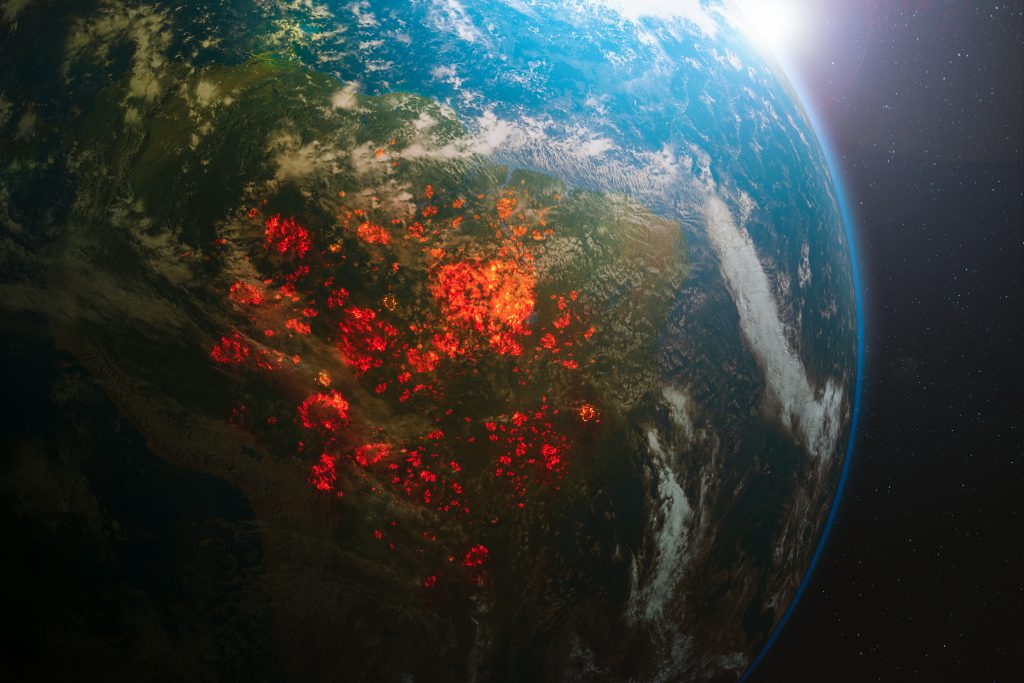The right to freedom is a fundamental right protected under international law and granted to all human beings, including children. This right encompasses four main dimensions of an individual’s identity and their connection to public life: freedom of movement, freedom of expression, freedom of thought, conscience and religion, and freedom of peaceful assembly and association.

Children’s rights approach to the right to freedom
The Universal Declaration of Human Rights (UDHR), adopted in 1948, was the first legal document which enshrined the right to freedom across four different dimensions: freedom of movement and residence (Article 13), freedom of thought, conscience and religion (Article 18), freedom of opinion and expression (Article 19) and freedom of peaceful assembly and association (Article 20) (UN, n.d.).
“Universal human rights are the travelling companions that support every human being, from the first sigh to the last sigh.”
– Smith, 2004
The human rights conventions make no exception for children. This was made clear already in Article 1 of the UDHR: ‘All human beings are born free and equal in dignity and rights’ (emphasis added). Although the UDHR is not legally binding, it serves as a model for human rights treaties (Smith, 2015).
Children’s rights are explicitly recognized under the Convention on the Rights of the Child (CRC) which integrates the right to freedom through three dimensions: freedom of expression (Article 13), freedom of thought, conscience and religion (Article 14) and freedom of association and peaceful assembly (Article 15) (CRIN, n.d.). Unlike economic and social rights, the right of the child to freedom of expression, religion, association, assembly and privacy cannot be linked to a state’s economic condition. These rights must be guaranteed to all children, including stateless children, without discrimination. Additionally, the child’s language or disability must not impede respect for the obligation to extend the freedom of expression to children (Save the Children, 2013).
Freedom of expression
Freedom of expression is an important indicator recognizing children as rights holders. Through expressing their feelings and opinions, children can describe how their rights are respected or infringed as well as learn to advocate for the rights of others (CRIN, Article 13).
The Universal Declaration of Human Rights (Article 19) and the International Covenant on Civil and Political Rights (ICCPR) (Article 19) enshrine this right for everyone, but the inclusion of a specific article on freedom of expression in the CRC emphasises that civil and political rights apply equally to children as to other human beings. After all, in order for societies to evolve in an open and democratic way, the views of all population groups must be represented, not just those of the most powerful (CRIN, Article 13).
Children’s right to freedom of expression is closely tied to Article 14 (freedom of thought, conscience and religion), 15 (freedom of association) and 17 (access to information). It also has close ties with Article 12 (children’s right to be heard). The Committee’s General Comment on Article 12 notes the similarities between these two Articles but clarifies their differences.
While Article 12 imposes an obligation on States to institute the legal framework and mechanisms necessary to help children take an active part in all matters affecting them, the right to freedom of expression entails no such action. Instead, States should refrain from interfering with this right and seek to foster an environment that respects children’s right to express their views (CRIN, Article 13).
How children express themselves
Children have the right to have access to information and express themselves through making art, speaking and writing provided it does not infringe upon the rights of others (UNCRC Child-friendly version, n.d.). For instance, play, which should be a fundamental aspect of childhood, is one of the ways through which children develop self-expression.
Everyone has a responsibility to encourage children to express themselves. But guidance should always be exercised in the context of the CRC as a whole and must respect and encourage children’s capacity to make their own decisions taking into account their age and maturity. Ensuring children have access to diverse information sources is key to helping them make up their minds and express themselves (CRIN, Article 13).
Freedom of expression in the digital age
In recent years, maintaining freedom of expression has become challenging. The rise of social media and new media platforms has exposed children to a wide range of content, including harmful content, which is difficult to control. It is important to understand that the content that children and young people create on or using the Internet or content others create in relation to them (e.g. pictures, videos, text or other content) may last or be permanently accessible.
This may challenge their dignity, security and privacy or otherwise render them vulnerable now or at a later stage in their lives (CoE, n.d.). Striking a balance between the right to freedom of expression and the right to privacy is not easy, but the main principle that should guide the discussion remains the best interest of the child.
Children should receive information in a language appropriate for their age and training from their teachers, educators and parents or guardians about the safe use of the Internet, including how to preserve their privacy. Children should also have access to clear information about online content and behaviour that is illegal (for example, online harassment) as well as the possibility to report alleged illegal content.
This information should be adapted to their age and circumstances, and they should be provided with advice and support with due respect for their confidentiality and anonymity (CoE, n.d.). Finally, children should have access to information and be protected from the risk of social media and internet addiction, given the potential negative impact that it would have on their mental health and well-being.
Freedom of thought, conscience and religion
People in many societies experience barriers to enjoying this right, in particular freedom of religion. However, children face additional barriers – their convictions are ultimately constricted by their parents and other adults around them (CRIN, Article 14, n.d.). Rarely can a child freely choose their religion or convert without parental consent, or coercion from family, school or the State.
International law requires that adults provide guidance while respecting children’s growing autonomy as they age (CRIN, n.d.). Allowing children to explore their beliefs helps form their identity and leads them to respect others, laying a foundation for societal harmony (Save the Children, Article 14, n.d.).
In some cases, the imposition of parents’ beliefs can lead to irreversible harm to children. Several child deaths have been recorded because their parents, from various religious backgrounds, have rejected life-saving medical interventions for their child on religious grounds (CRIN, Article 14, n.d.). For instance, the Followers of Christ, a religious sect, refuse medical practice as they believe that illnesses can be healed through faith and the power of prayer (Wilson, 2016).
Jehovah’s Witnesses also have strong positions when it comes to medical practice. According to their faith, Jehovah’s Witnesses are prohibited from sharing their blood with others, so blood transfusions are not allowed. In 2019, the UK High Court judge ruled a five-year-old girl from a family of Jehovah’s Witnesses to be given a blood transfusion against her parents’ wishes to save her life (Farmer, Stubley, 2019).
Freedom of association and peaceful assembly
At the core of every child’s development is the freedom to belong, to share, and to grow with others, with the inherent right to freely associate and form groups. Protected under Article 15 of the CRC, this right is pivotal for their social and emotional development, fostering a sense of belonging and community engagement. (Save the Children, Article 15, n.d.).
Through interactions within groups, children learn essential life skills – communication, teamwork, and resilience. When freely chosen, groups also allow children to express themselves around like-minded kids and pursue their own interests in safe, supportive environments (Save the Children, Article 15, n.d.).
Children’s interest in building civic participation should be nurtured, not suppressed. However, some restrictions to this right guarantee the safety and well-being of children and ensure that their right to associate does not infringe upon the rights of others or pose a threat to public order, health, or morals.
For instance, while children should be free to join groups or clubs, these groups must operate within the framework of law and respect the rights of others. Violent gangs and cults are examples of groups that are not in the spirit of Article 15. (Save the Children, Article 15, n.d.).
Examples of children’s rights to association and civil participation
Youth engagement in climate change

Climate change is an urgent and complex issue that directly impacts the younger generation. According to a recent survey, three-quarters of 10,000 children and young people aged 16 to 25 in ten countries said they were frightened of the future (Hickman, 2021). More than half said that humanity was doomed. Luckily, young people are rising to the challenge and becoming more and more active in combatting climate change (Zacharenkova, 2023).
Inspired by leaders such as Greta Thunberg and her “Fridays for Future” movement, youth-led climate groups have gained unprecedented momentum with young activists pushing for urgent environmental change (Zacharenkova, 2023). Young people across the world are setting up groups and movements to bring their concerns and solutions to policymakers and fuel the dialogue on climate change at local, national and international levels.
Children’s Councils and Children’s Parliaments
Children have the right to be heard in all matters affecting them, in addition to rights and freedoms to appropriate information, thought, expression, association and peaceful assembly. Children may exercise the right to participation in various ways, whether individually or in groups, including in decision-making processes at home, in school or within the community. This applies to all children capable of forming their own opinion. It is the responsibility of local institutions—such as schools, communities, and cities—to create supportive environments and structures that promote child participation.
Child and youth councils are the primary formal mechanisms for child participation at the level of the municipality and within schools. However, their structure, mandates, membership size, and recruitment processes can vary widely(UNICEF, 2022).
Rethinking about children’s right to freedom
More than 20 years after ratification and implementation of the CRC there is growing recognition that there has been insufficient progress in realising children’s civil and political rights. Children are disenfranchised by their lack of power to vote, and few governments have made significant efforts to invest in budgets, legal frameworks, policies or programmes that enhance the realisation of children’s rights to expression, information, participation, association, peaceful assembly and other civil rights.

In many countries, prevailing socio-cultural attitudes towards children also limit the realisation of their civil rights. Furthermore, discrimination on the grounds of gender, ethnicity, religion, caste, income or other factors creates further obstacles to children’s realisation of their civil rights (Save the Children, 2013).
When considering advocacy for lower voting ages, programming on children’s civil rights and freedoms should also encompass more systematic work with governments, civil society, and the media to increase mechanisms that can increase the fulfilment of children’s civil rights for all girls and boys. Efforts to promote children’s rights to freedom of thought, conscience and religion and to privacy, and to ensure that children do not face punishment, torture or arrest as a result of exercising their civil rights, are also important (Save the Children, 2013).
A systematic approach is needed that supports broader efforts by state governments, UN agencies, NGOs and others to act upon their responsibilities to fulfil children’s civil rights and freedoms. All children must be registered at birth.
All children should have access to information, and institutional space for children’s representation in governance processes must be created at all levels (in schools, communities, local governance, sub-national and national levels). Networking and legal recognition of children’s associations and freedom of assembly at different levels will also enhance meaningful opportunities for children and young people to influence national, regional and global policy developments on issues affecting them (Save the Children, 2013).
Written by Arianna Braga
Internally proofread by Aditi Partha
Last updated on 24 November 2024
References:
CoE (n.d.). Children and Young People. Retrieved from Council of Europe Portal at https://www.coe.int/en/web/freedom-expression/children-and-young-people, accessed on 23 November 2024.
CRIN (n.d.). Children’s rights illustrated. Retrieved from Child Rights International Network (CRIN) at https://home.crin.org/rights-gallery-the-convention, accessed on 24 November 2024.
CRIN, Article 13 (n.d.). Article 13: Freedom of expression. Retrieved from CRIN at https://archive.crin.org/en/home/rights/convention/articles/article-13-freedom-expression.html, accessed on 23 November 2024.
CRIN, Article 14 (n.d.). Article 14: Freedom of thought, conscience and religion. Retrieved from CRIN at https://archive.crin.org/en/home/rights/convention/articles/article-14-freedom-thought-conscience-and-religion.html, accessed on 23 November 2024.
Farmer, B., Stubley, P. (2019). Judge orders doctors to give Jehovah’s Witness girl blood transfusion against her parents’ wishes. Retrieved from Independent at https://www.independent.co.uk/news/uk/home-news/jehovahs-witness-blood-transfusion-doctor-judge-ruling-girl-leeds-nhs-trust-religion-a8977066.html, accessed on 16 December 2024.
Hickman, C. et al. (2021). Climate anxiety in children and young people and their beliefs about government responses to climate change: a global survey. Retrieved from The Lancet at https://www.thelancet.com/journals/lanplh/article/PIIS2542-51962100278-3/fulltext, accessed on 16 December 2024.
Save the Children (2013). Pushing the Boundaries: A guide to increasing the realisation of children’s civil rights and freedoms. Retrieved from Save the Children at https://resourcecentre.savethechildren.net/document/pushing-boundaries-guide-increasing-realisation-childrens-civil-rights-and-freedoms/, accessed on 23 November 2024.
Save the Children, Article 14 (n.d.). UNCRC Article 14: freedom of thought and religion. Retrieved from Save the Children Australia at https://www.savethechildren.org.au/about-us/save-the-childrens-charity-work/uncrc-article-14-freedom-of-thought-and-religion, accessed on 23 November 2024.
Save the Children, Article 15 (n.d.). UNCRC Article 15: children’s right to association and groups. Retrieved from Save the Children Australia at https://www.savethechildren.org.au/about-us/save-the-childrens-charity-work/uncrc-article-15-childrens-right-to-association, accessed on 23 November 2024.
Smith, C. (2004). Human Rights as the Foundation of Society, in P. Lodrup and E. Modvar (eds.), Family Life and Human Rights (Oslo: Gyldendal, 2004), 15.
Smith, L. (2015). Convention on the Rights of the Child: freedom of expression for children. In T. McGonagle & Y. Donders (Eds.), The United Nations and Freedom of Expression and Information: Critical Perspectives (pp. 145–170). Retrieved from Cambridge University Press at https://doi.org/10.1017/CBO9781316018552.006, accessed on 24 November 2024.
UN (n.d.). Universal Declaration of Human Rights. Retrieved from United Nations at https://www.un.org/en/about-us/universal-declaration-of-human-rights, accessed on 24 November 2024.
UNCRC Child-friendly version (n.d.). The United Nations Convention on the Rights of the Child. Retrieved from Save the Children UK at https://www.savethechildren.org.uk/content/dam/global/reports/uncrc-child-friendly-version1.pdf, accessed on 23 November 2024.
UNICEF (2022). Effective, representative, and inclusive child participation at the local level. Retrieved from UNICEF at https://www.childfriendlycities.org/media/1491/file/Child%20participation%20at%20local%20level.pdf, accessed on 23 November 2024.
Wilson, J. (2016). Letting them die: parents refuse medical help for children in the name of Christ. Retrieved from The Guardian at https://www.theguardian.com/us-news/2016/apr/13/followers-of-christ-idaho-religious-sect-child-mortality-refusing-medical-help, accessed on 16 December 2024.
Zacharenkova, J. (2023). Youth involvement in climate action. Retrieved from OPEC Fund at https://opecfund.org/news/youth-involvement-in-climate-action, accessed on 23 November 2024.

